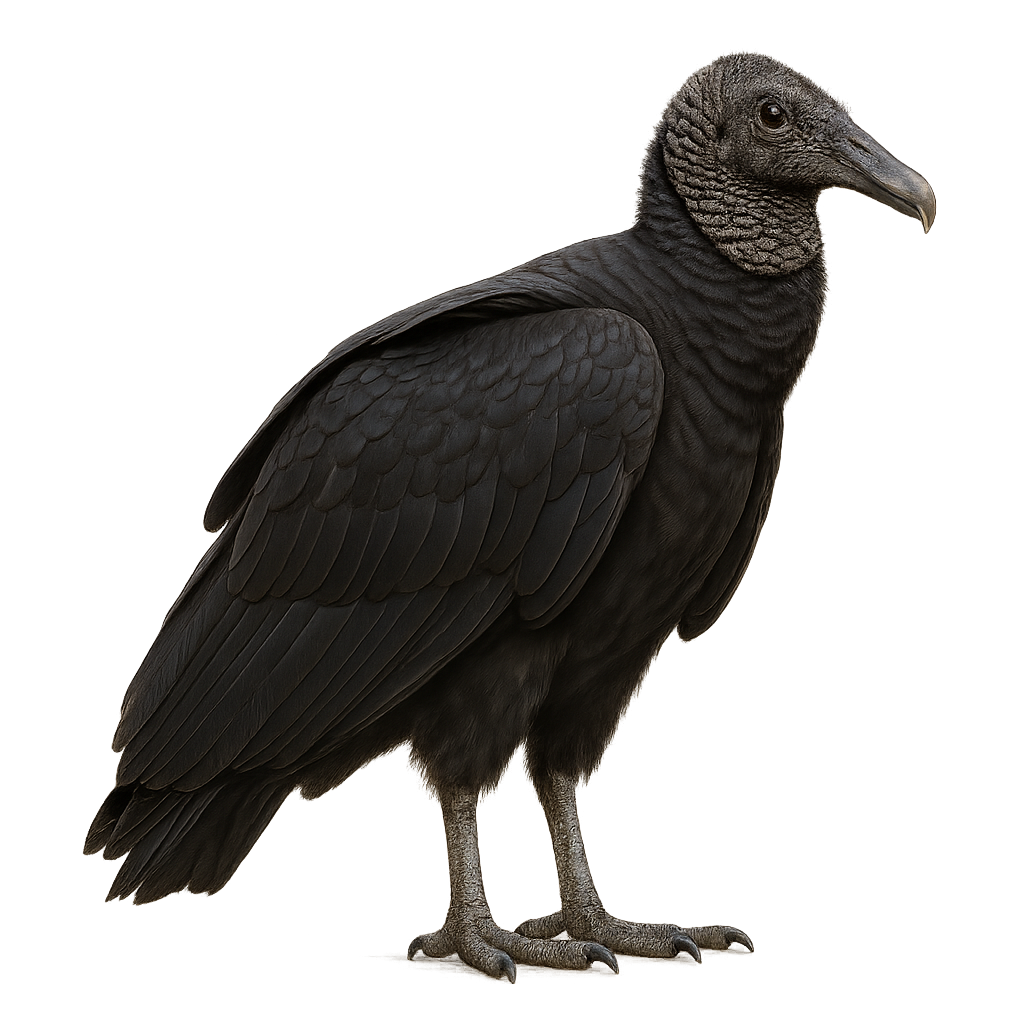Your wildlife photography guide.
Explore the black vulture in detail, study its behavior, prepare your shots.
Where to observe and photograph the black vulture in the wild
Learn where and when to spot the black vulture in the wild, how to identify the species based on distinctive features, and what natural environments it inhabits. The WildlifePhotographer app offers tailored photography tips that reflect the black vulture’s behavior, helping you capture better wildlife images. Explore the full species profile for key information including description, habitat, active periods, and approach techniques.
Black Vulture
Scientific name: Coragyps atratus

IUCN Status: Least Concern
Family: CATHARTIDAE
Group: Birds
Sensitivity to human approach: Suspicious
Minimum approach distance: 10 m
Courtship display: February to May
Incubation: 32-45 jours
Hatchings: March to June
Habitat:
Forests, urban areas, grasslands, marshes
Activity period :
Primarily active during the day, with peak activity in the morning and late afternoon.
Identification and description:
The Black Vulture, or Coragyps atratus, is a medium-sized scavenger bird, easily recognized by its entirely black plumage and grayish bare head. It is often seen soaring with its broad, short wings and is distinguished by its short, square tail. This bird is widespread across the Americas, from the southern United States to Argentina. It inhabits various environments, from forests to urban areas, and plays a crucial ecological role by disposing of carcasses. Although often seen in large groups, the Black Vulture is somewhat wary of humans. Its ability to adapt to different environments and feed on various food sources makes it a resilient species.
Recommended lens:
400mm – adjust based on distance, desired framing (portrait or habitat), and approach conditions.
Photography tips:
To photograph the Black Vulture, focus on open areas where it often soars. A telephoto lens of 400mm or more is recommended to capture precise details without disturbing the bird. Look for moments when it is in flight to get dynamic shots. Morning or late afternoon light can provide soft and flattering lighting. Be patient and discreet to avoid scaring it, and use a tripod to stabilize your camera.
The WildlifePhotographer App is coming soon!
Be the first to explore the best nature spots, track rutting seasons, log your observations, and observe more wildlife.
Already 1 432 wildlife lovers subscribed worldwide

